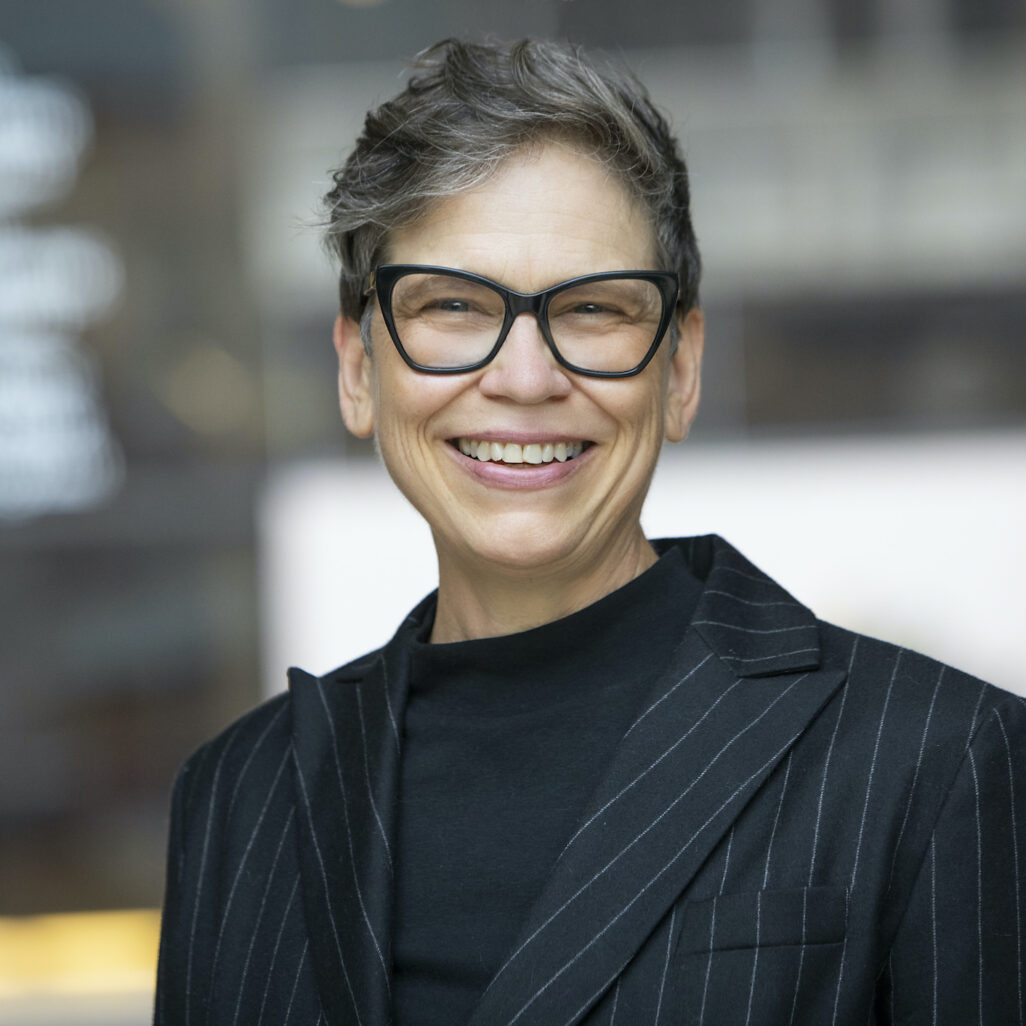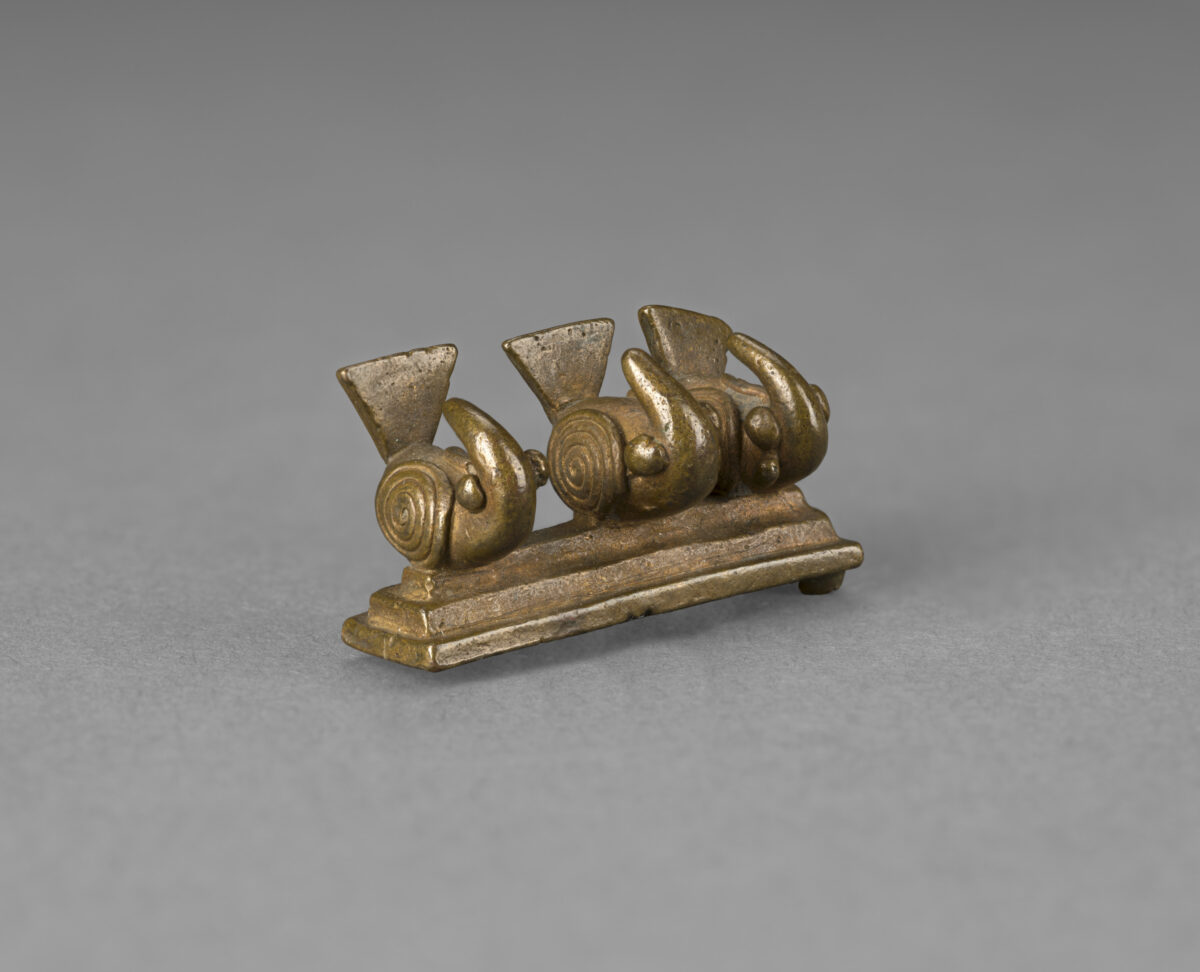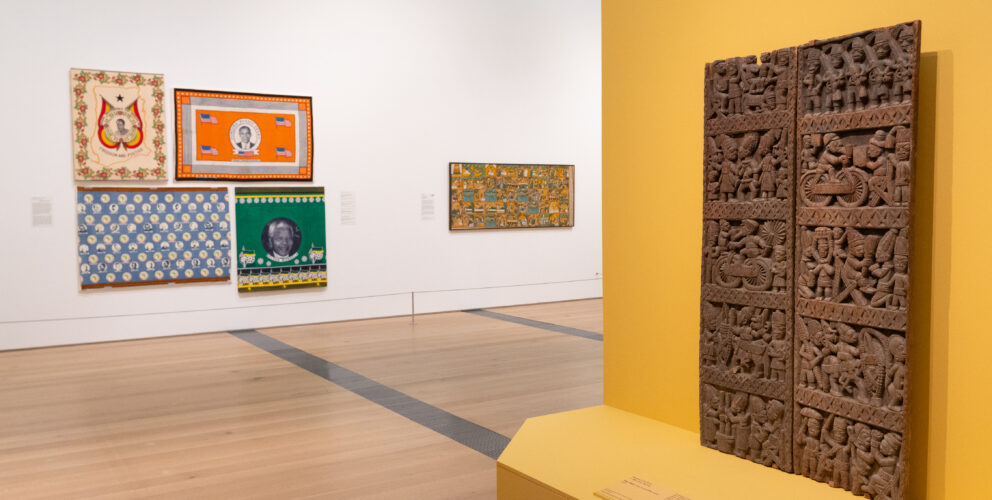Yinka Shonibare (b. 1962, United Kingdom), The American Library Collection (Activists) (detail), 2018; hardback books, Dutch wax-printed cotton textile, gold foil, bookcase; 98 x 40 x 13 inches; Mead Art Museum, Amherst College, purchased with the William K. Allison (Class of 1920) Memorial Fund
A tall, white bookcase bursting with bright colors and glints of gold beckons gallery visitors to take a closer look. Whose library is this? What stories does it tell? Currently on view as part of the exhibition Narrative Wisdom and African Arts, the six-tier bookcase features the names of 99 activists, including Harry Belafonte, Jackson Browne, Harry Hay, Dolores Huerta, Marcus Garvey, Fred Korematsu, Malcolm X, Ralph Nader, Gloria Steinem, and Elie Wiesel. But their legacy of activism is not all these individuals have in common. Their lives were all shaped by immigration to or relocation within the United States.
The Activists bookcase is part of the 2018 American Library Collection, an expansive work of art by Yinka Shonibare that celebrates America’s diversity and the significant contribution to American life and culture by immigrants and people affected by the Great Migration. In The American Library as a whole, some 6,000 books in total, over 3,000 books carry the gold-embossed names of individuals representing fields from science to activism, music to philosophy, and art to literature. Visit The American Library website to learn more about the individuals included in the installation.

Yinka Shonibare (b. 1962, United Kingdom), The American Library Collection (Activists), 2018; hardback books, Dutch wax printed cotton textile, gold foil, bookcase; 98 x 40 x 13 inches; Mead Art Museum, Amherst College, purchased with the William K. Allison (Class of 1920) Memorial Fund
The Activists bookcase on view at the Saint Louis Art Museum focuses on just one of the thematic groupings. Each book is covered in Shonibare’s signature Dutch wax printed cotton textile. Originally based on Indonesian batik textiles, these fabrics—today a fashion symbol of Afrocentric identity—were made in the Netherlands and sold in West Africa. The fabric’s mixed origins serve as a metaphor for America’s multicultural identity and complex interrelationship with other geographies, histories, and economies.
Shonibare was born, studied, and lives in London but grew up in Lagos, Nigeria. Using a range of media—sculpture, painting, film, photography—the artist’s oeuvre addresses race, class, and cultural identity through the lens of colonialism and migration. For years, Shonibare had been using the Dutch wax fabric to create costumes for his mannequin sculptures. In 2014, he began using it to wrap books and created The British Library (now in the permanent collection of Tate Modern in London), a project reflecting his own dual identity as British Nigerian. The books’ spines bear the names, in gleaming all-caps, of first- or second-generation immigrants to Britain who have made significant contributions to British culture and history.
In both The British Library and The American Library, some books are intentionally left nameless, suggesting that the story of immigration in each country is still being written. Seeking to prompt not only discovery but also debate, Shonibare includes in each library a number of books with the names of those who have spoken out against immigration, equality, or diversity.
One definition of narrative is a story, an account of events or experiences that are brought together in an oral or visual telling, or as printed text in the pages of a book. Installed in the very last gallery of the Narrative Wisdom and African Arts exhibition, Shonibare’s bookcase brings together these different traditions in a single work. Arrayed across six shelves, the gold names on the colorful batik book spines form a multivocal choir of identities calling out into the gallery as both individuals and as a collective. These activists’ names do not represent authorship in the usual sense—the writers of books—but rather they are coauthors of America’s uniquely diverse and dynamic culture. At the same time, they are part of a lineage of ancestral wisdom that reaches across time and space.
-
Kawira Mwirichia, Kenyan, 1986–2020; printed by Haria's Stamp Shop Limited, Nairobi, Kenya, founded 1958; To Revolutionary Type Love: Brazil (Mziki Wangu Maisha, Nawe Viatu Vya Kusakata Rhumba), designed 2017, printed 2023; digital print on polyester; 37 1/2 x 58 inches; Saint Louis Art Museum, Museum purchase 56:2024; © Estate of Kawira Mwirichia
-
Zulu artist, South Africa; Necklace (ithemba/ipasi), late 19th century; beads, string, button; central panel: 9 13/16 x 4 1/8 x 1/4 inches, clasped: 15 x 7 3/4 x 1/4 inches; Yale University Art Gallery, Leonard C Hanna Jr., Class of 1913, Fund 2024.300
-
Baule artist, Ghana; Animalistic Goldweight (Birds in groups), 1600–1720; brass; 1 9/16 inches; Saint Louis Art Museum, Gift of Morton D. May 764:1983
The exhibition includes eight centuries of African arts—the 13th to the 21st centuries—and weaves unexpected connections throughout. In the final section, “Ancestral Wisdoms and Allegory,” Shonibare’s Activists is in dialogue with other artworks combining textile and text, for example, the rectangular, vibrantly patterned khanga cloths worn as markers of Swahili identity, here with an LGBTQ+ pride spin. Artist Kawira Mwirichia designed a series of 42 khangas, displayed digitally, expanding on khangas’ history of speaking out against oppression by adopting the form to advocate for queer people worldwide. The galleries’ other “reading” material includes Zulu and Xhosa beadworks containing coded messages created by young women for a beloved, and a display of miniature counterweights traditionally used by precolonial gold traders and embodying a verbal-visual nexus: Akan proverbs given figurative form.
Before leaving Narrative Wisdom and African Arts, I lingered over these counterweights, modest in scale yet packed with wisdom, as captured in the accompanying interpretive text. A group of three tiny birds cast in bronze caught my eye. Perched side by side, the birds allude to a proverb regarding kinship ties. But they also echo the form of the books perched side by side on Shonibare’s bookshelf. His homage to activists from many different backgrounds working on many different issues posits another kind of kinship—based not on blood ties but on a shared commitment to advancing needed changes in society. It’s a kinship accessible to all.
Sylvia Sukop is a doctoral student in the department of comparative literature and thought at Washington University in St. Louis, and a former curatorial intern in the department of the arts of Africa, Oceania, and Americas at the Saint Louis Art Museum. She also contributed an essay to the Narrative Wisdom and African Arts exhibition catalogue.




